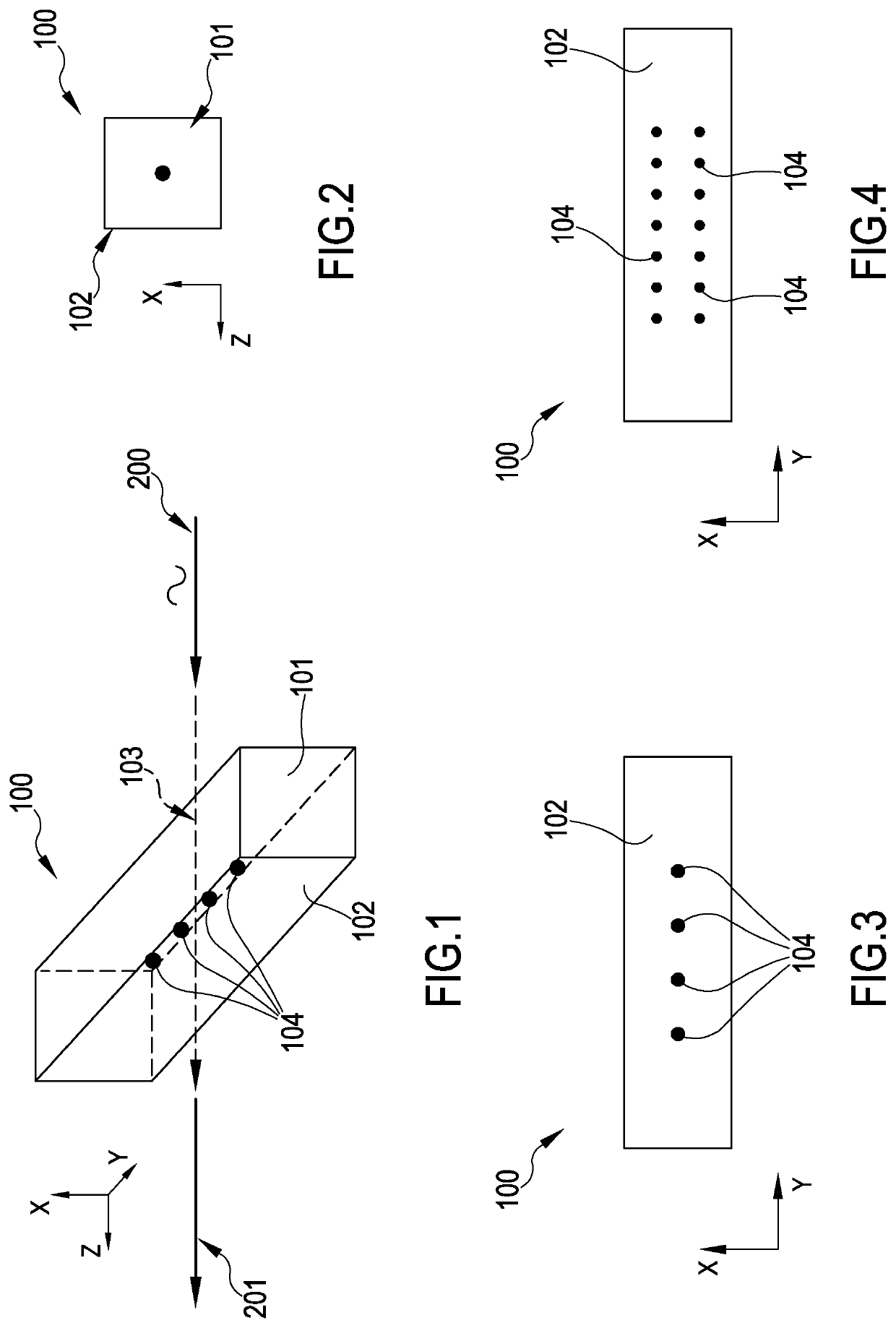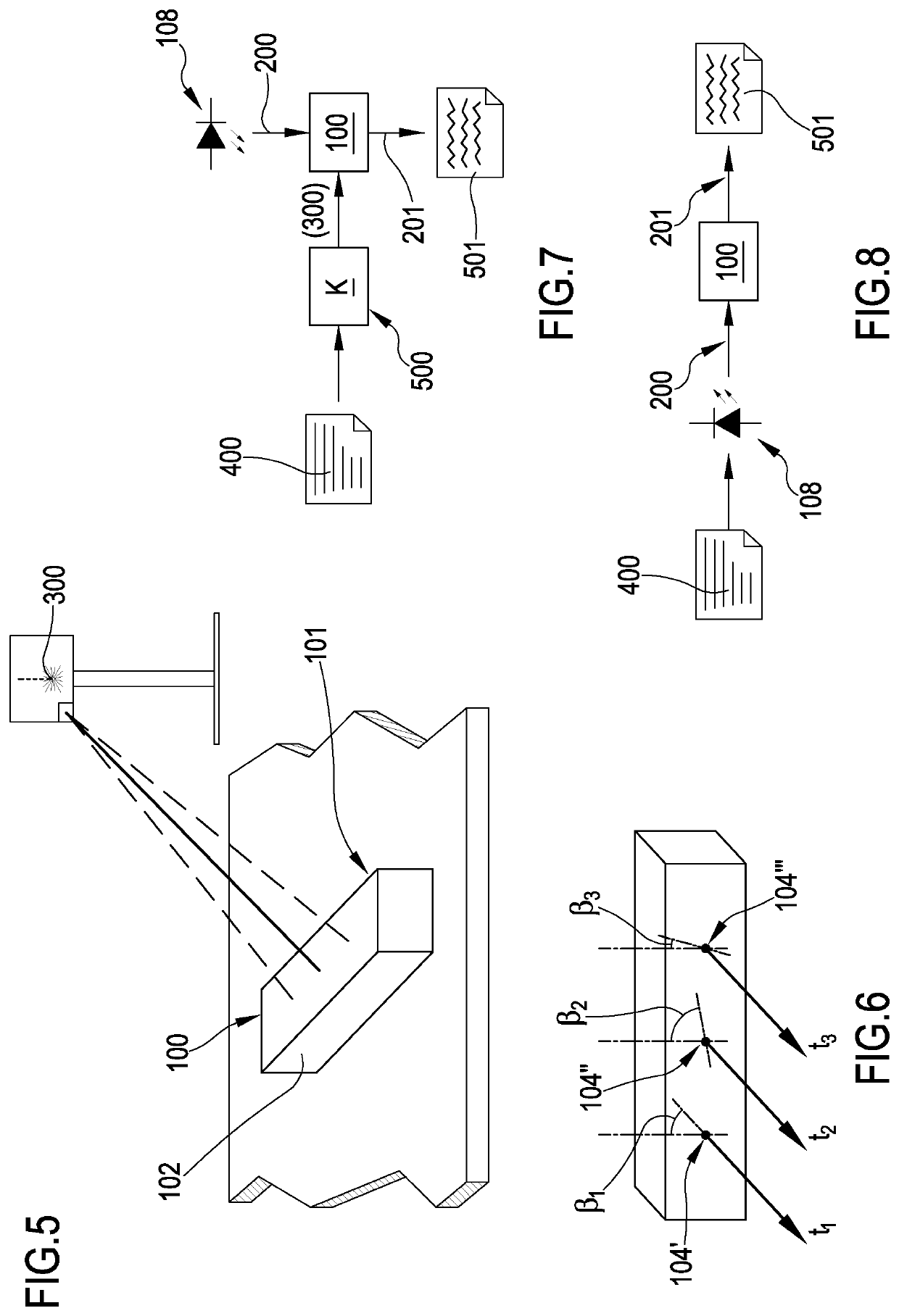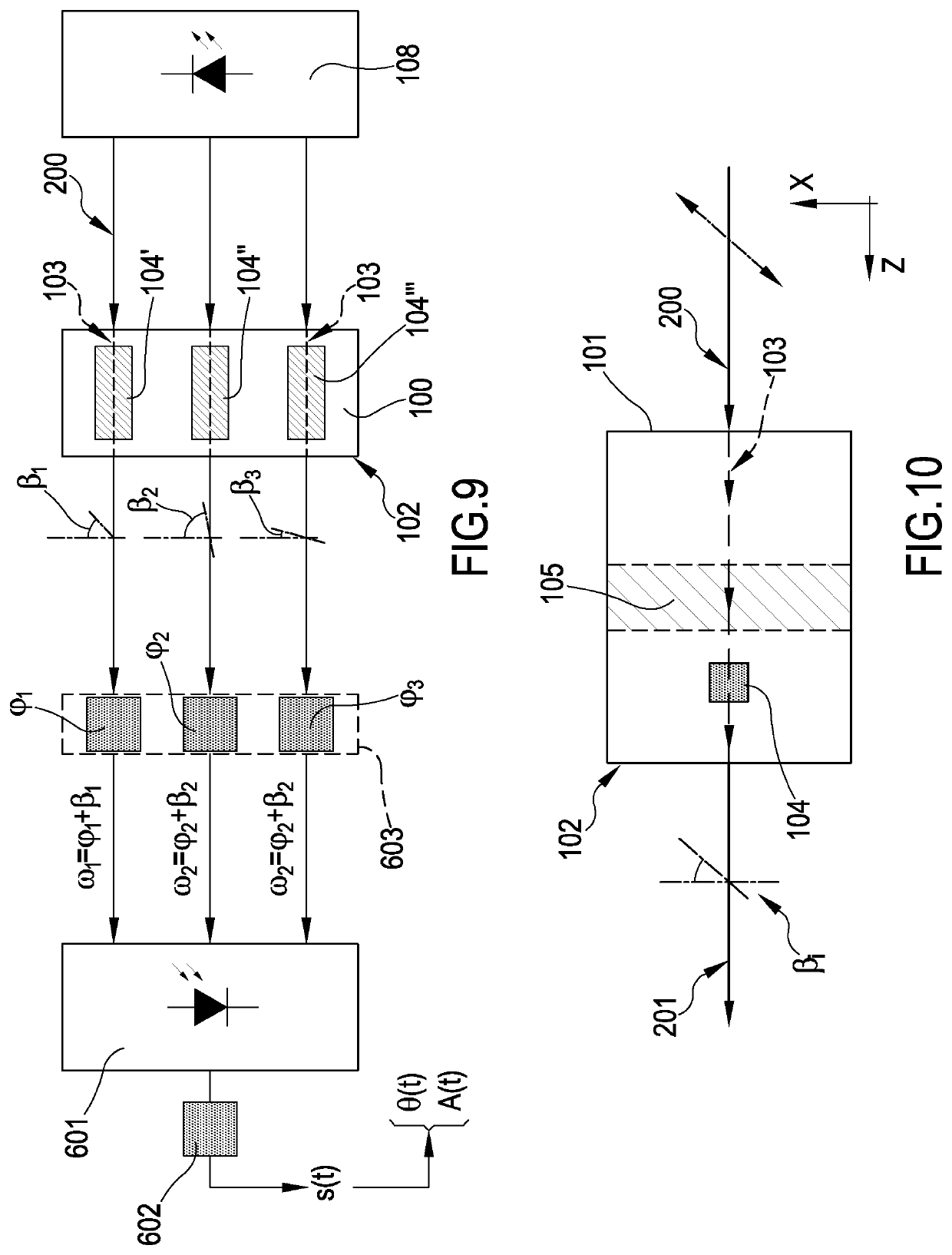Method for encoding and decoding data by varying the distinctive characteristics of an optical radiation, encoding device and decoding system
a data and optical radiation technology, applied in the field of data coding and decoding systems, can solve problems such as security, ciphering by transmitting on a wireless channel has always been subject to fraudulent receipt by non-authorised users, and full receipt of ciphered messages can be subject to brute force attacks
- Summary
- Abstract
- Description
- Claims
- Application Information
AI Technical Summary
Benefits of technology
Problems solved by technology
Method used
Image
Examples
Embodiment Construction
[0123]First and foremost, the present invention regards an encoding element 100 at least selectively transparent to a luminous, infrared or ultraviolet radiation.
[0124]The encoding element 100 comprises at least one first surface 101 which represents a first input or incidence surface for a radiation 200 and a second surface 102 which represents a second output surface for said radiation 200, which passes—in the volume defined by the encoding element 100—through a preferential optical path 103 defined between the first and second surface 102. Though the preferential optical path 103 is preferably straight, this configuration shall not be deemed to be limiting. As a matter of fact, for particular configurations of the encoding element 100, the first incidence surface and the second output surface of said radiation 200 can coincide. This is particularly the case when obtaining full reflections inside the element. Likewise, though the attached figures show a parallelepiped-shaped encod...
PUM
 Login to View More
Login to View More Abstract
Description
Claims
Application Information
 Login to View More
Login to View More - R&D
- Intellectual Property
- Life Sciences
- Materials
- Tech Scout
- Unparalleled Data Quality
- Higher Quality Content
- 60% Fewer Hallucinations
Browse by: Latest US Patents, China's latest patents, Technical Efficacy Thesaurus, Application Domain, Technology Topic, Popular Technical Reports.
© 2025 PatSnap. All rights reserved.Legal|Privacy policy|Modern Slavery Act Transparency Statement|Sitemap|About US| Contact US: help@patsnap.com



